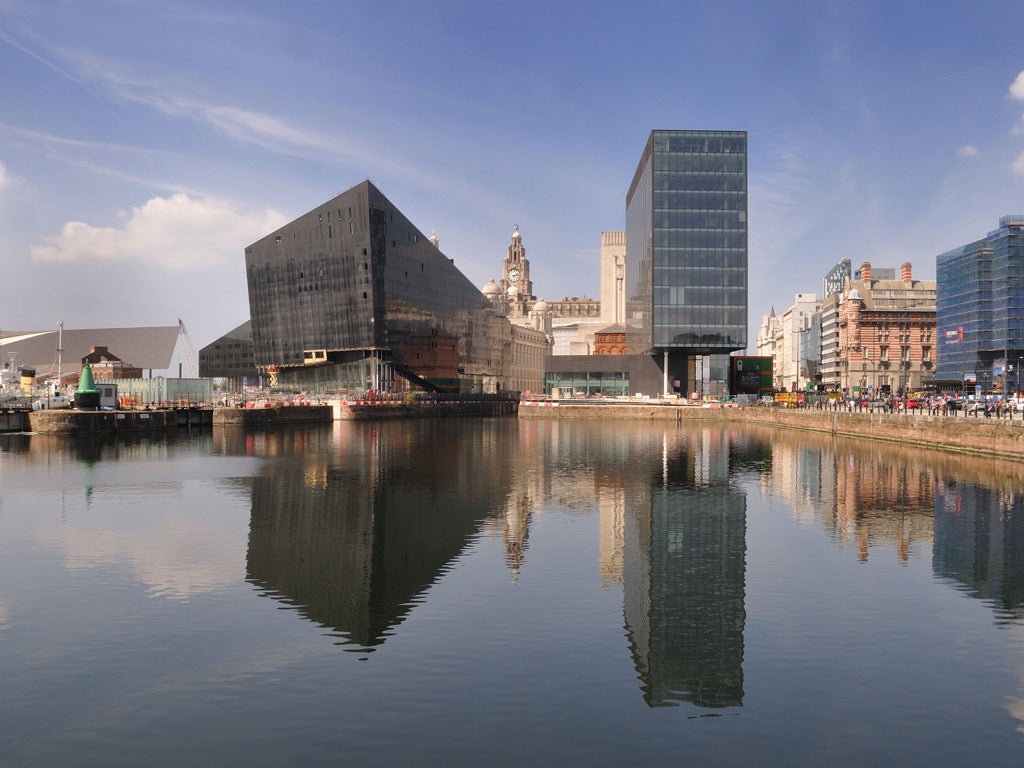Is Liverpool's world heritage status in ruins?
A billionaire's 60-storey skyscraper has prompted Unesco to reconsider the honour it granted the city

The Liverpool antique dealer who complained to Unesco about a billionaire tax exile's plan for a 60-storey Shanghai Tower skyscraper on the Mersey is unrepentant.
Three inspectors from Unesco are being dispatched from Paris to Liverpool on Monday to decide whether the city is to be stripped of its status as a World Heritage Site.
An independent report by English Heritage has concluded that the Peel Group's £5.5bn Liverpool Waters scheme, Britain's biggest planning application, would have "a significant damaging negative impact on the Liverpool world heritage site and its outstanding universal value".
Wayne Colquhoun, 50, who runs the Liverpool Preservation Trust from his art shop in the India Buildings, the former headquarters of the Blue Funnel Line, warned Unesco in Paris.
He said yesterday: "I have no regrets about causing this trouble. I was compelled to complain. This city is not safe in the hands of its present leaders. English Heritage is supporting me but I fear the people seem to want to turn our wonderful city into Shanghai-on-Mersey at a time when we should be looking to Amsterdam to build an architectural future on the human scale.
"When we attained world heritage status they said we were up there with the Taj Mahal and the Pyramids. But who would have dared to plan for a 60- storey tower overlooking the Taj Mahal?
"I think Unesco should have objected to the three black coffin structures already built to block one of our great vistas near the Pier Head."
The experts are Ron van Oers, a Dutch urban planner, Patricia Alberth, a German expert in development, and the noted Italian conservation architect Giancarlo Barbato. After a three-day visit, they will reach a decision by Christmas.
The proposed tower was named by Peel's director of development, Lindsey Ashworth, and chairman, John Whittaker, the richest resident in the Isle of Man, after a visit to the Liverpool Pavilion at the 2010 World Expo in Shanghai, Liverpool's twin city.
The usually reclusive Lancashire-born Whittaker, 69, joined the Prime Minister, David Cameron, on a trade delegation to Shanghai last November.
The Peel Group of 200 companies is a member of the Downtown Liverpool in Business pressure group headed by former Labour Party activist Frank McKenna. McKenna yesterday called for Liverpool to ditch its world heritage status "if it gets in the way of rebuilding our economy and our previous reliance on public sector grants and handouts.
"If the price of that vanity badge is wrecking the Peel plans, we should pay it. The vanity badge, from what I can tell, has brought little, if any, benefit."
The city and Peel have recently been hammered by architectural critics. In 2009, the Merseytravel Pier Head ferry terminal won the Carbuncle Cup awarded by the magazine Building Design for "the ugliest building in the United Kingdom completed in the last 12 months".
Liverpool's retiring planning chairwoman, Lady Doreen Jones, said she had felt "blackmailed" into approving a design that looked like "an architectural student's failed first attempt".
Struck off: Heritage has-beens
Only one European location has previously been removed from Unesco's World Heritage List.
For their persistence in constructing the four-lane Waldschlösschen Bridge over the river Elbe in the centre of the capital of Saxony, the city fathers of Dresden were stripped of their status in 2009.
The Elbe valley, running for 11 miles between water meadows, eighteenth century palaces and parks, had been on the List of World Heritage in Danger for four years.
The former East German city, still rebuilding after the Communist era and the 1945 firestorm bombing raids, consequently lost access to a €150m fund for Unesco sites.
The only other deletion from the list was Oman's Oryx Antelope Sanctuary in 2007. It came after the discovery of oil under the sanctuary.
Join our commenting forum
Join thought-provoking conversations, follow other Independent readers and see their replies
Comments
Bookmark popover
Removed from bookmarks